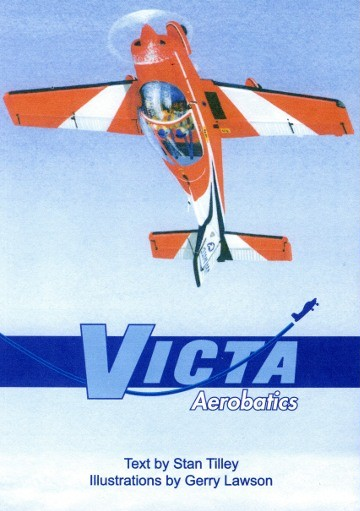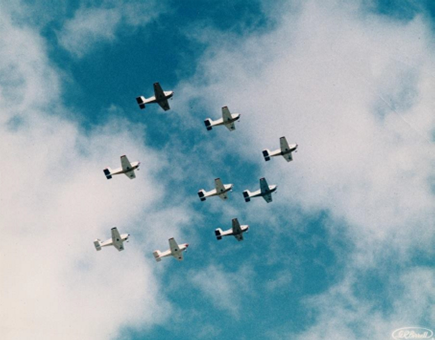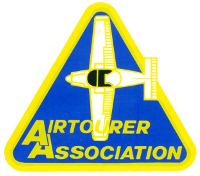Formation Flying Introduction
From Stan Tilley's Victa Aerobatics

The Victa/CT-4 series of aircraft are excellent for formation. Power is sufficient in all models and the control response and visibility is superb.
To fly formation requires skill and concentration equal to aerobatics and other precise flying. Keep in mind that formation flying is probably the most dangerous of all flying. Why? Because the safety of the formation depends not only on yourself but the other pilots as well.
The leader must fly a beautifully balanced aeroplane with minimum throttle and control changes.
Dual instruction with a qualified person is essential to teach you how to handle the variable changes that are necessary to maintain and regain position.
To keep your formation flying safe, there are a few basic rules.
- Do not fly formation with other aircraft without a pre-flight briefing.
- Do not fly formation if you do not have an endorsement.
- Do not fly formation if the other pilots are not endorsed.
- Do not fly formation if you do not have complete faith in your leader. (The formation leader is the most important member of the formation. She or he can give you a brilliant and exciting flight or fly you into disaster.)
- Keep the other aircraft in sight at all times.
- Concentrate, communicate and anticipate.
- Never just close up and fly formation on another aircraft unless they know you are there and both the pilot and passengers agree.
When following, use the throttle firmly all the time to accelerate or decelerate your aircraft to maintain position but remember that momentum = mass x velocity.
It takes time for the forces to act so you must anticipate, allowing for this delayed reaction. The throttle is the most important and used control in formation flying.
There are three basic formation positions.
- Echelon (the aircraft angled back from either the right or left of the lead)
- Line astern (immediately behind the other aircraft)
- Line abreast (wings in line)
- All bodies at rest or in uniform motion along a
straight line will continue in state unless acted
on by an outside force.Important: For the pilot flying in formation, this means the weight (mass) of your plane travelling at speed (velocity) will continue in a straight line until you, by means of the controls, apply an outside force.
- Force is proportional to mass x
acceleration.Important: The heavier your aircraft and the faster it is moving, the greater the force required to change.
- For every action there is an equal and opposite reaction.

